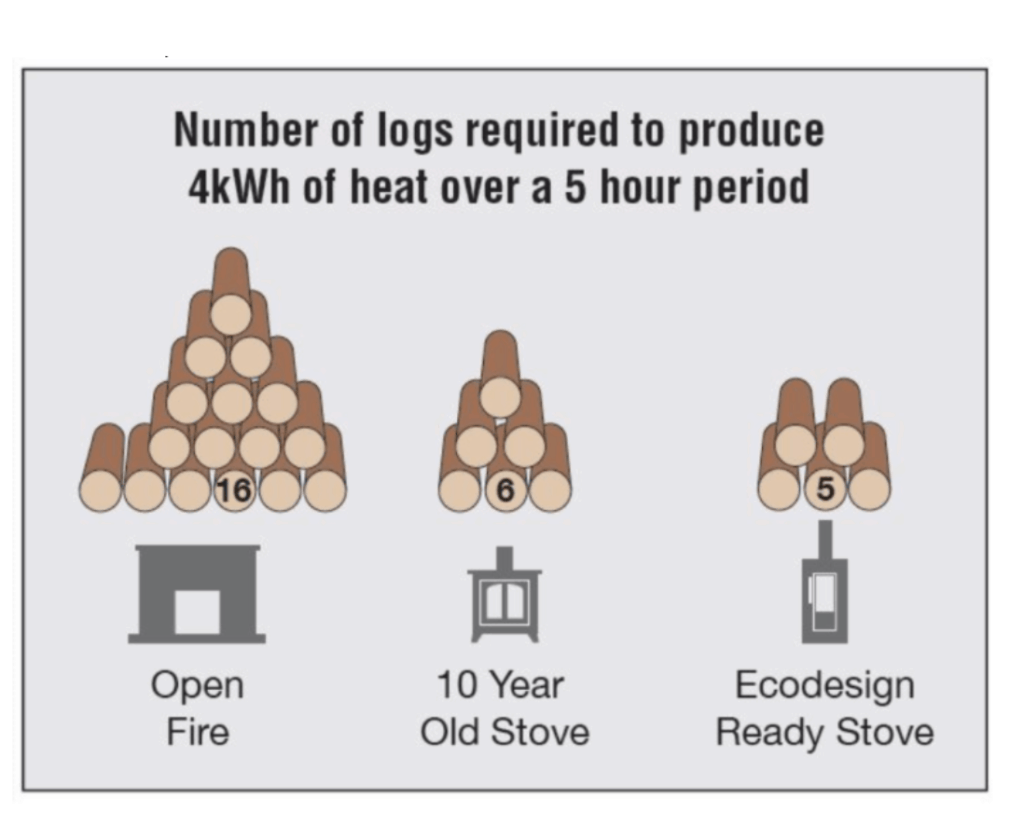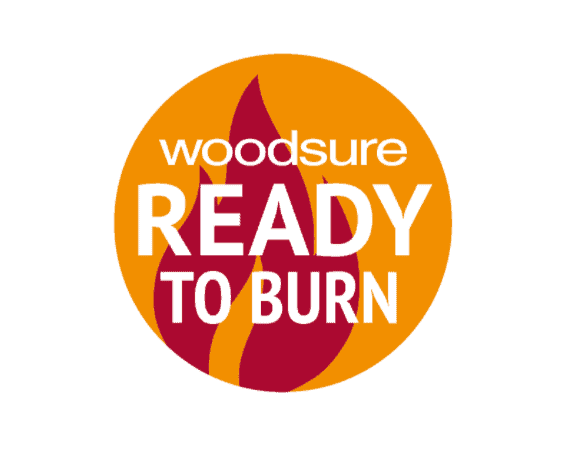All our stoves are Ecodesign and clearSkies approved. They have been designed to make sure they are incredibly efficient. An open fire has an efficiency level of around 20%. In comparison, an Ecodesign stove has an efficiency level of around 80%. We need to be doing everything we can to lower our carbon footprint and increase appliance efficiency.
The diagram below explains the efficiency of an Ecodesign Ready stove vs an open fire.

While an Ecodesign Ready stove is designed for maximum efficiency, there are things you need to be aware of, to make sure you are maximising the potential of your stove.
Here are a few pointers to help you:
Refuelling your fire – Place the logs into the centre of the fire, away from the rear, sides and glass. By doing this you are helping keep the glass and the liners clean. Make sure you use your stove gloves when opening the door and when adding wood and adjusting the controls.
The RIGHT Wood – Hardwood logs are the best for a fire. Their moisture content is critical, too. The moisture levels should be no more than 20%. Too high moisture (known as wet wood) will create an inefficient burn and increase the levels of tar in a flue, which in turn can increase the risks of a chimney fire and carbon monoxide poisoning. Equally, a moisture level that is too low is also bad news, as the wood will often burn too quickly. Look for Woodsure “Ready to Burn” quality assured wood. Since May 2021, all wood for sale under 2m3 is labelled as “Ready to Burn” – it’s the law. This assurance scheme is to help unsuspecting buyers avoid purchasing “wet” wood.

Fuels NOT to use on your stove:
House Coal – The sale of traditional house coal (also known as bituminous coal) was banned in England from 1st May 2023 (but not in Scotland or Wales). Anthracite coal, semi-anthracite coal and low volatile steam coal is still available for sale.
Smokeless Coal/Briquettes – Over time the chemicals in the smokeless coal and briquettes can discolour the fire and can cause a range of other problems, as a result, it’s highly recommended that you avoid these fuel sources.
Painted or preserved woods – Burning such wood can release very toxic chemicals into the atmosphere, which are a direct threat to air quality. Furthermore the chemicals can also damage and discolour the inside of your fireplace.
Newspaper and card – Paper and card burn very quickly and can easily float up the chimney (when lit) and ignite creosote/tar currently residing in a flue, possibly causing a fire. Burning both should be avoided.
Storing Firewood:
As a general rule, freshly cut wood should not be stored inside. However, firewood should be bought inside one day before it is to be burnt. Outdoor woodsheds are ideal for storing wood, although not all households have the space for this. If you don’t have a woodshed, then make sure where you store the wood is in a dry, well-ventilated area, which is protected from dampness and rain. You should also allow air to be able to flow in, under and around the logs. Cross-stacking wood is best. Do not stack too high unless the wood is supported by a damp-free wall.
Car garages are not ideal for storing wood due to the fire risk. Firewood should also not be stored directly on top of the ground without supporting logs, as this can trap moisture. The key to successful storage and seasoning of logs is ensuring they are kept dry and have adequate air circulating around them.
If you are making the move to a wood-burning stove, it’s never too late to start seasoning your own wood. Starting now and gathering your own firewood means in a year or two, depending on the wood you gather, you will have a nice supply of wood to keep you warm.








